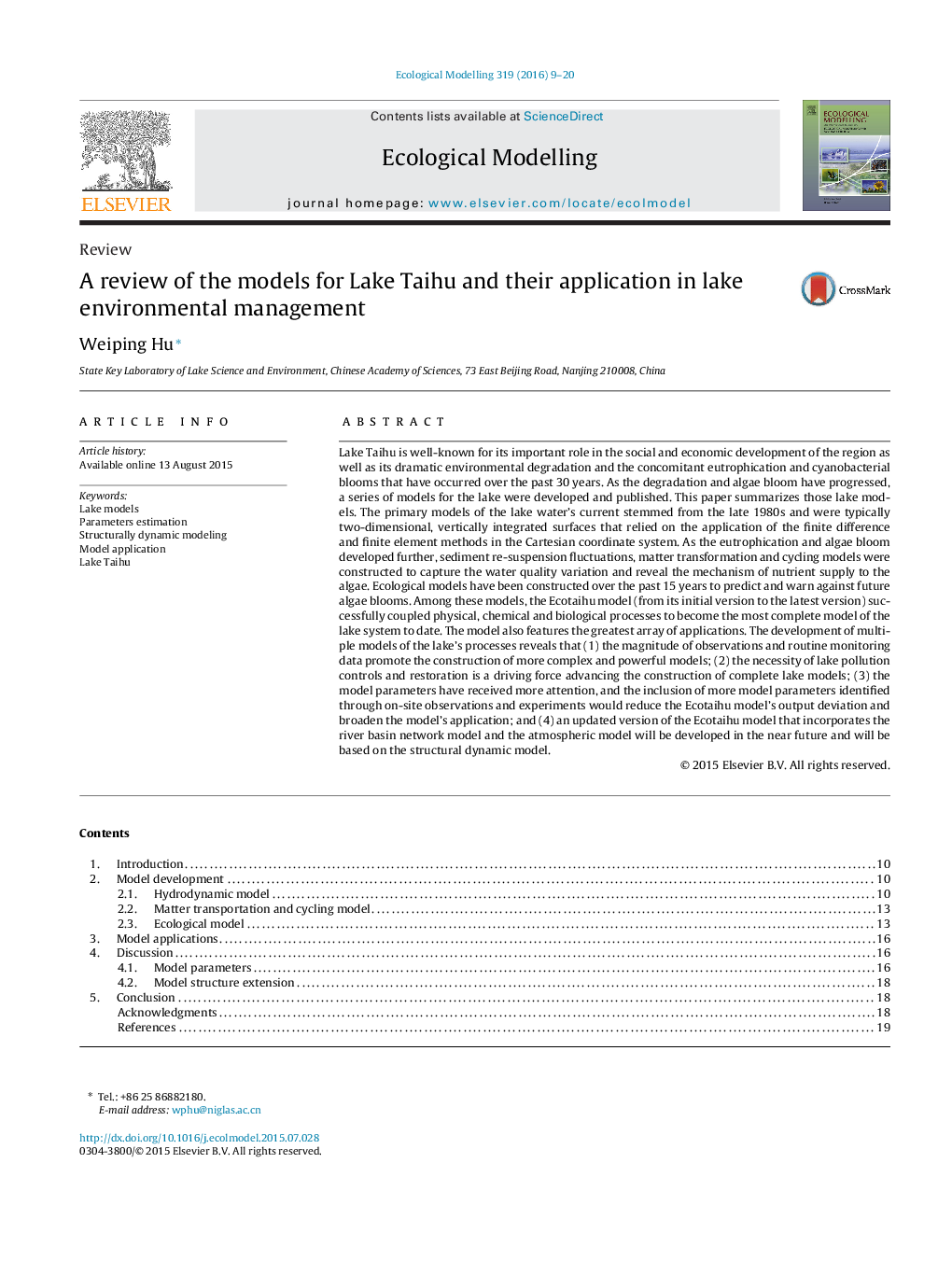| Article ID | Journal | Published Year | Pages | File Type |
|---|---|---|---|---|
| 4375608 | Ecological Modelling | 2016 | 12 Pages |
•Lake Taihu's environmental characteristics and problems are summarized.•The development and applications of models are reviewed.•Pollution control and restoration require lake models to utilize more components to be effective.•A structural dynamic model would facilitate the formation of a future model.•A future model should encapsulate atmosphere, river networks, and lake models as a whole.
Lake Taihu is well-known for its important role in the social and economic development of the region as well as its dramatic environmental degradation and the concomitant eutrophication and cyanobacterial blooms that have occurred over the past 30 years. As the degradation and algae bloom have progressed, a series of models for the lake were developed and published. This paper summarizes those lake models. The primary models of the lake water's current stemmed from the late 1980s and were typically two-dimensional, vertically integrated surfaces that relied on the application of the finite difference and finite element methods in the Cartesian coordinate system. As the eutrophication and algae bloom developed further, sediment re-suspension fluctuations, matter transformation and cycling models were constructed to capture the water quality variation and reveal the mechanism of nutrient supply to the algae. Ecological models have been constructed over the past 15 years to predict and warn against future algae blooms. Among these models, the Ecotaihu model (from its initial version to the latest version) successfully coupled physical, chemical and biological processes to become the most complete model of the lake system to date. The model also features the greatest array of applications. The development of multiple models of the lake's processes reveals that (1) the magnitude of observations and routine monitoring data promote the construction of more complex and powerful models; (2) the necessity of lake pollution controls and restoration is a driving force advancing the construction of complete lake models; (3) the model parameters have received more attention, and the inclusion of more model parameters identified through on-site observations and experiments would reduce the Ecotaihu model's output deviation and broaden the model's application; and (4) an updated version of the Ecotaihu model that incorporates the river basin network model and the atmospheric model will be developed in the near future and will be based on the structural dynamic model.
